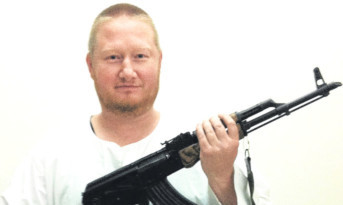
A former jihadi has warned allowing Britons who have fought in Syria to return home will put dozens of trained killers on our streets.
Danish-born Morten Storm met some of al Qaeda’s top men after converting to Islam in 1997 and joining extremists in the Yemen. But he renounced his faith and went on to help MI5, the CIA and the Danish secret service to thwart terrorist attacks.
He said: “We shouldn’t just be worried about the UK, we should be worried about Europe. Just a few weeks ago a guy who had returned from Syria killed four people in Belgium.
“The more people go over there, the more training and the more skilled they get, the more danger we will face. If we allow them to return to the UK or Europe, we will have a lot of trained killing machines walking around.”
The Danish government plans to strip the nationality from those who have travelled to Syria to fight. Morten, 38, who is now living in hiding in Britain, believes the UK Government should do likewise.
“Many people from Britain go to Syria because they think the Government here will take care of their families and pay them benefits while they go and make Jihad.”
Morten first encountered the militant side of Islam when he travelled to Yemen to study his new faith.
“It was a place where they study Islam comprehensively, and Jihad is part of that. Two months before 9/11 I was invited to Afghanistan by Osama bin Laden. I declined because he insisted new recruits should bring their families and my wife at the time had just had our first child.”
Morten began to question his faith after being unable to join the fighting in Somalia in 2006.
He said: “Why would Allah prevent me from fighting Jihad?”
“I started Googling ‘contradictions in Islam’, something I’d never done. I began to realise it was my duty as a human being to prevent terrorism.”
Morten, whose book Agent Storm has just been published, says he received “valuable” training in Scotland while working with MI5 and MI6.
“I was trained near Inverness when they brought a guy in from the SAS to instruct me in wilderness survival and night navigation.
“In Edinburgh, on the streets near the castle, I did counter-surveillance training.”
Morten decided to tell his story when he learned his life was in danger from people in the security services.
He added: “I take precautions whenever I travel.”
His warning came only days after a British man who has been fighting in Syria said he will not return until the “black flag of Islam” is flying over Buckingham Palace.

Enjoy the convenience of having The Sunday Post delivered as a digital ePaper straight to your smartphone, tablet or computer.
Subscribe for only £5.49 a month and enjoy all the benefits of the printed paper as a digital replica.
Subscribe